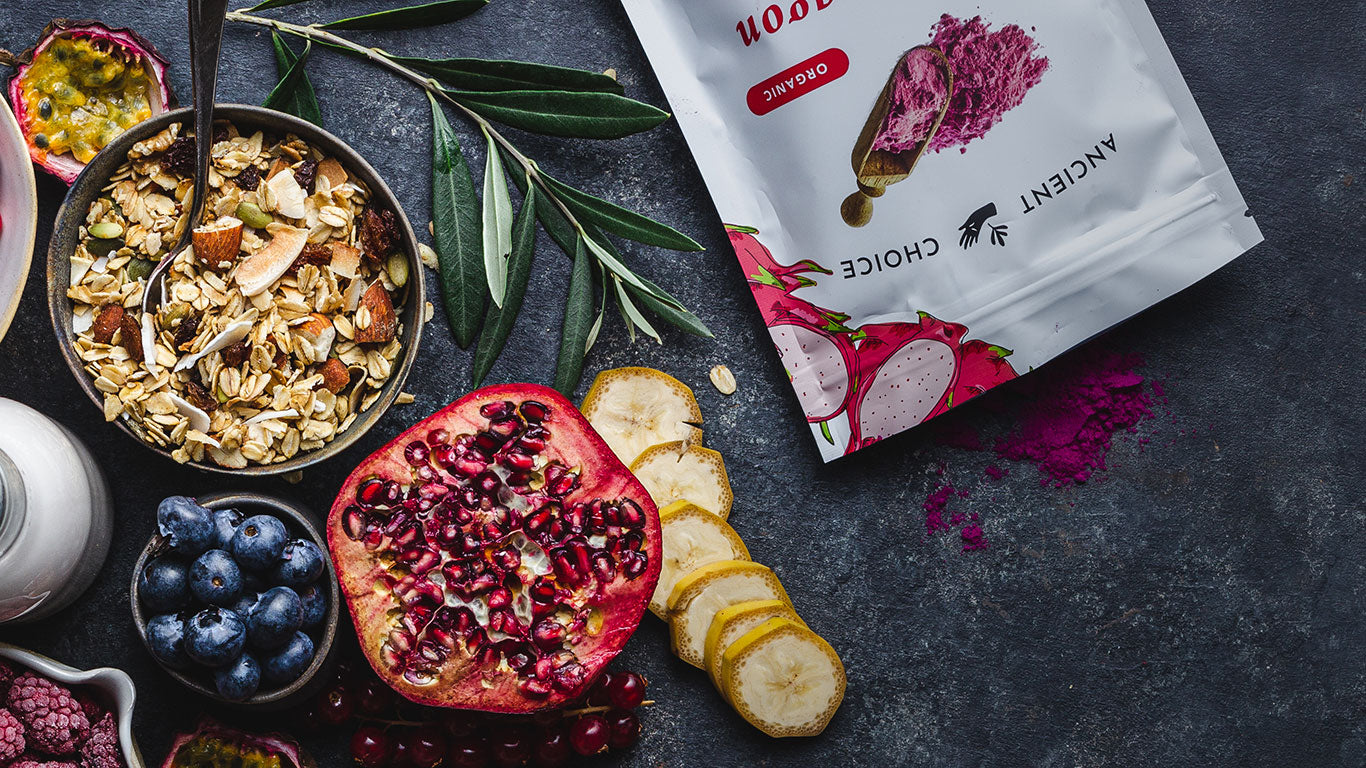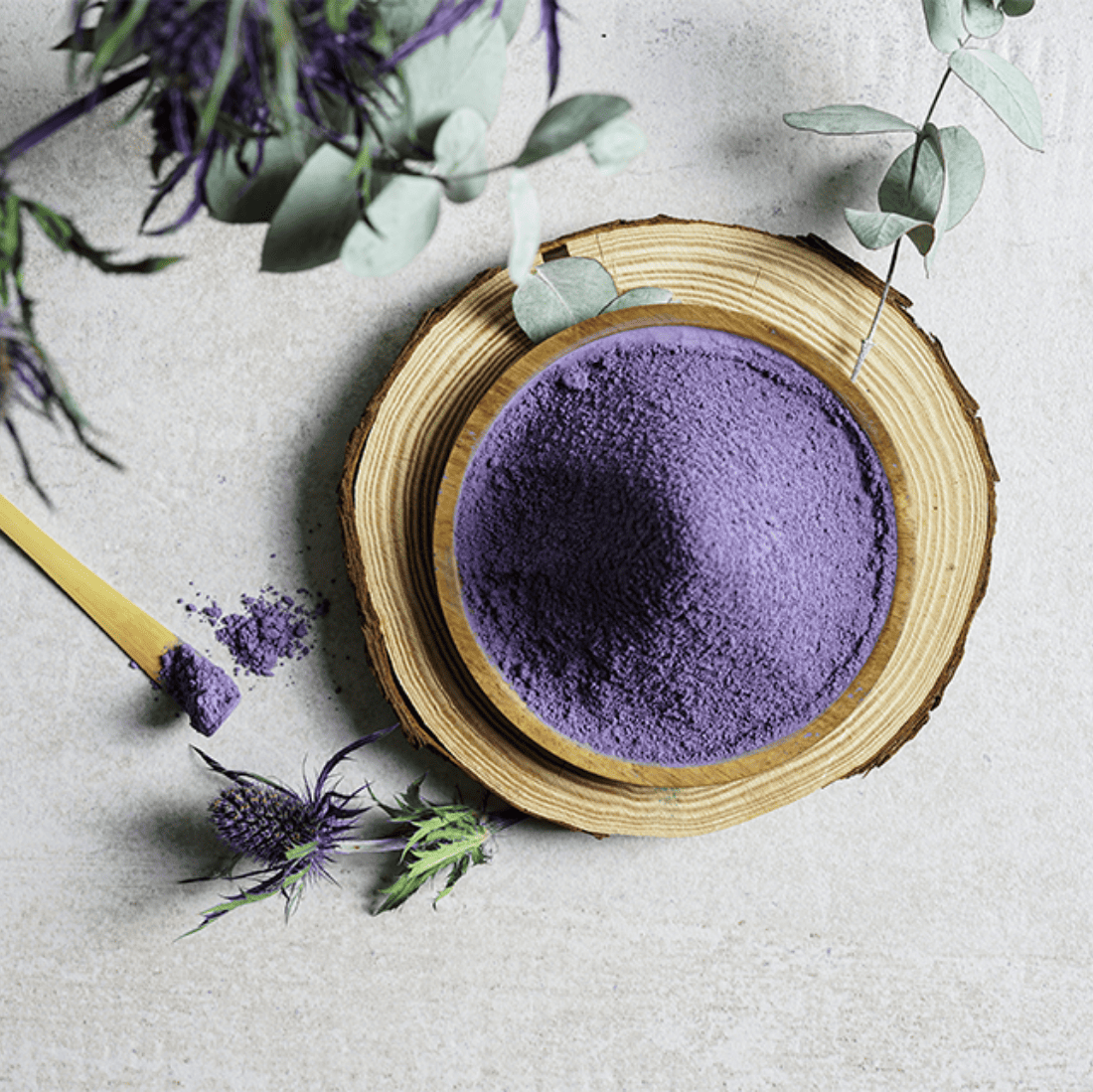
Did you know there are options for coloring your food that are completely natural?
Better yet, you can achieve amazing color while also adding antioxidants and vitamins to your meals. We're talking about using natural powdered food coloring.
These options avoid the artificial ingredients and food dyes that have become especially concerning lately, with the FDA banning some due to cancer risks.
Instead, powdered food coloring let you enjoy colorful and healthy meals without worrying side effects.
Join us as we explore how this powder is made, why it’s better than other types of food dyes, and why choosing the natural alternative will always be the smartest decision.
Table of contents
How Powdered Food Coloring is Created

They say we eat with our eyes, and honestly, a plate full of vibrant colors just hits different—you can’t resist wanting to try it.
Food coloring is a pigment used to add color to foods and drinks. It comes in different forms, but the powdered food coloring options are the most natural and surprisingly convenient.
Fruits, veggies, and plants have natural pigments that give them their beautiful colors. Powdered food coloring is made by drying and then grinding those ingredients. Then you simply mix the powder into your food. Piece of cake! (And yes, you can literally use it for cake too.)
Some traditional drying methods can make food colors fade and lose their brightness. But processes like freeze-drying keep the natural color and even the nutritional profile intact.
Therefore, you’re not only getting intense and vibrant dyes but also a product that makes your meals both healthy and eye-catching.
How food looks affects our desire to try it, and how it tastes too. A beautifully presented plate can improve our appetite and make the meal unforgettable.
Why Choose Natural Over Artificial Food Coloring
Choosing natural over artificial will always be the smart choice, but in case you're not completely sure, here’s why:
Natural food coloring powder comes from plant-based sources, so it’s a product close to its raw, unprocessed form.
Artificial food coloring, on the other hand, is made from chemicals, preservatives, fillers, additives, and added sugar—basically everything your nutritionist would tell you to avoid.
These artificial ingredients are linked to all kinds of health concerns, like allergic reactions, hyperactivity in kids, and even cancer.
Take Red No. 3, for example. This synthetic dye, used to give foods and drinks a bright, cherry-red color was recently banned by the Food and Drug Administration (FDA) . The reason behind this decision is that it’s been linked to cancer.
Natural sources used to develop food coloring offer a wide pallet of unique pigments that artificial dyes can't replicate, and they don’t come with those negative side effects for our health.
With all the focus on health-conscious eating and clean diets, we’re all paying closer attention to what we put into our bodies. Choosing natural powdered food coloring is probably one of the easiest ways to start.
Benefits of Using Powdered Food Coloring

Highly Concentrated
Let’s go back to the freeze-drying process we mentioned earlier.
We already know that this drying method preserves the fruit with its original properties, like pigments, nutrients, and flavor, and then it’s turned into powder, without adding any unnecessary fillers.
This means you’re getting the pure, whole ingredient, which makes powdered food coloring highly concentrated.
Sometimes you’ve got to see it to believe it, so check out this Mini Dragon Fruit Powder Cheesecakes recipe, where just 2 tsp of Dragon Fruit Powder provides a rich intense pink color, and you can always adjust the amount to get the shade that you want.
The possibilities to use these healthy food colorings are endless. Try them in cakes, frostings, smoothies, beverages, and almost anything you can think of!
No Added Liquid
This benefit is especially important for recipes where maintaining the texture of the mixture is key.
When baking bread, cakes, or cookies, extra moisture can make the dough sticky, affecting the perfect consistency and hydration.
On the other hand, meringues and whipped creams depend on incorporating air to stay fluffy, and certain food colorings can destabilize the mixture, causing it to lose volume or collapse.
Powdered coloring doesn’t add extra moisture to the mix, keeping the texture exactly as you intended, and preventing issues like overly wet batters that might ruin the lightness and fluffiness.
Plus, since it doesn’t contain water, it has a very long shelf life, preserving the color, flavor, and freshness of fruits for years (even decades!), so you can enjoy these healthy food colorings whenever you want, no matter the season.
The Healthiest Option
When powdered food coloring comes from natural sources, it's the safest way to add color to your food.
Since it's made directly from fruits and plants, it’s naturally rich in antioxidants, which are known for their wide range of health benefits.
Unlike artificial colorings, which sometimes have animal-derived ingredients, powdered food dyes fit perfectly into any diet, whether you're doing paleo, keto, plant-based, or vegan—you name it!
It’s a great option for enjoying creative and colorful meals without compromising your lifestyle or dietary choices.
No Unwanted Aftertaste
Many food colorings contain artificial ingredients that, even though they’re "safe”, often leave a weird, usually bitter taste behind.
Not to mention that some colorings come with unhealthy amounts of sugar.
All of that can affect the flavor of recipes, especially if you need to use a lot just to get a strong color.
With a natural option, you can use as much as you need to get the shade you're looking for, without worrying about an unwanted aftertaste.
Common Natural Sources Behind Food Coloring

Ever wondered why fruits and veggies have such bright colors, or where those colors come from?
All those amazing shades come from natural pigments, which depend on the climate, environment, and growing conditions of each plant.
There are different types of natural pigments, each one provides a unique shade, and as a bonus, they offer health benefits too.
Here are some of the most common natural sources used to get food coloring:
-
Betroot for red/pink: This veggie is the go-to for deep red and pink tones, thanks to betalains.
If you’ve ever chopped it, you know your fingers will definitely end up stained!
If you’re looking for something more flavorful, Strawberry Powder and Dragon Fruit Powder are great alternatives. Plus, they’re fantastic sources of antioxidants that help keep your skin glowing, support healthy aging, and provide energy naturally.
-
Turmeric for yellow: A root used to get warm yellow tones provided by curcumin, one of its powerful active compounds. It’s commonly used in mustard and curry powders.
-
Spirulina for green: This algae gives a bright green shade from two pigments: chlorophyll and phycocyanin.
Known for its health benefits, it’s often added to energy bars and supplements.
-
Butterfly pea flower for blue: This flower is the healthiest option for natural blue coloring.
The pigment behind the color is called anthocyanin—specifically, ternatin—a powerful antioxidant that has a wide range of health benefits, from enhancing immunity to improving cognitive function.
And here’s the fun part: when you mix Butterfly Pea Flower Powder with lemon juice, it turns purple!
Keep that little trick handy, you never know when you'll need to impress someone.
-
Carrot for orange: Carrots are a well-known source of bright orange color.
All thanks to beta-carotene, a pigment that helps your body produce vitamin A, essential for maintaining healthy eyesight.
-
Wild blueberry for purple: These small berries are perfect for getting a deep purple color.
Their color also comes from anthocyanins, but specifically from compounds called cyanidins and delphinidins.
Wild blueberries have three times more antioxidants than regular blueberries, providing an important variety of health benefits.
Food coloring like Wild Blueberry Powder makes it easy to add color to your meals, while also giving you and your family something that’s genuinely good for you.
Exploring Other Types of Food Coloring
There are lots of different types of food colorings out there, each one with its own pros and cons. Let’s break them down real quick, so next time you’ll know exactly which one works best for what you’re making.
Liquid Food Coloring
This option is everywhere, really easy to find in most grocery stores. It’s a good choice for liquids or water-based recipes, but you might need more than expected to get a bold color.
Be careful, adding too much could affect the texture of the mixture, and definitely, no one’s here for that bitter aftertaste.
Gel Food Coloring
They’re more concentrated than liquid colorings, meaning you only need a small amount to get the same vibrant color.
Just keep in mind that they can affect the texture of recipes that are sensitive to moisture, and mixing them evenly can be a little challenging.
Paste Food Coloring
Paste is even more concentrated than liquids or gels, which means it’s great for getting bright shades.
However, this option can be tricky to mix as it tends to clump easily, and you might end up with an uneven color distribution.
Oil-Based Food Coloring
Great for oil-based recipes like chocolates, but if you try using it in water-based ones, it probably won’t mix well, so it’s not the best option for all foods and drinks.
Creative Ways to Use Powdered Food Coloring
Powdered food coloring is an easy and natural way to add colors to drinks, baked goods, beverages, ice cream, desserts—pretty much anything you want.
Here are a few ways you can use it:
Cooking and Desserts


Make your breakfast both fun and nutritious! Butterfly Pea Flower Pancakes only need 1 tsp of Butterfly Pea Flower Powder to transform your pancake batter into a gorgeous blue color. Plus, you’ll be getting a good dose of antioxidants to keep your body feeling great all day.
If you're looking for an eye-catching yet healthy dessert, the Wild Blueberry Cheesecake recipe is the way to go. By adding 2 tbsp of Wild Blueberry Powder, you’ll get a rich purple color along with all the antioxidant benefits these berries have to offer.
Drinks and Beverages


How about a two-colored smoothie? Choose your favorite fruits and almond milk, then blend one half with Strawberry Powder, and the other with Wild Blueberry Powder. Pour the first mix into your glass, then carefully layer the second mixture on top using a spoon to keep the colors nicely separated.
If you’re in the mood for something more fun, you can prepare cocktails using Blue Matcha. It has that awesome color-changing effect, shifting from blue to purple when you add something citrusy like lemon juice.
Give these ideas a try, and feel free to get creative with your own combinations. We’d love to hear how it goes, so leave us a comment below and let us know how it turned out!






